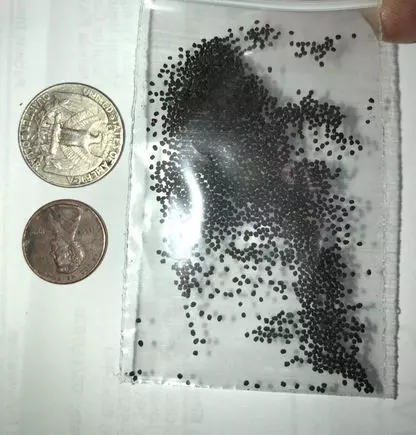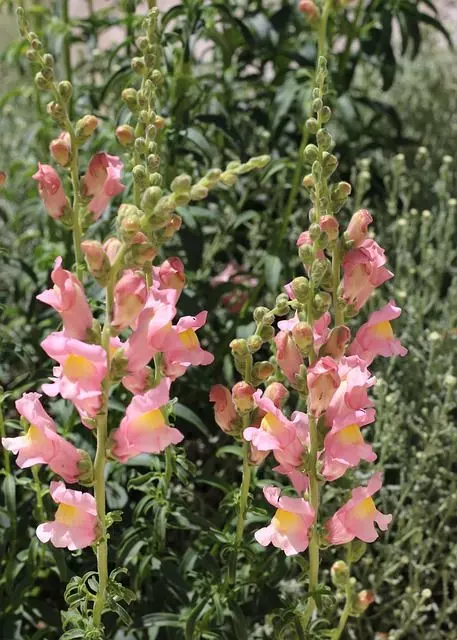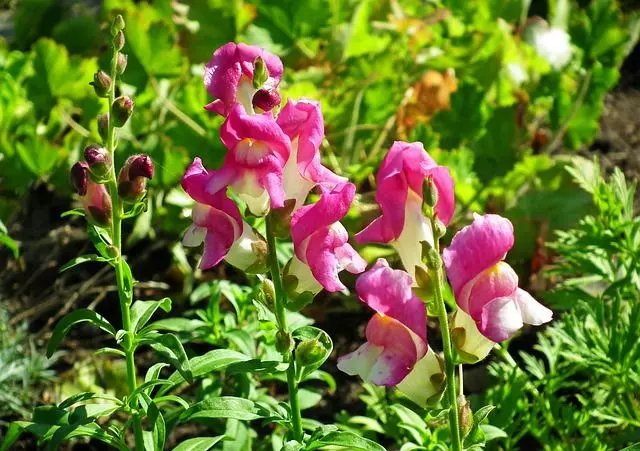Snapdragon plants (Antirrhinum) can be propagated only from seeds. They cross-pollinate easily, so if you sow seed collected from a snapdragon, the resulting seedling plant is not guaranteed to be true to type, and the color of the flowers may be completely different. In this article, we will explain step by step how to propagate snapdragons from seeds.

Table of Contents
Growing Snapdragons from Seeds
To propagate, snapdragons should be sown in trays towards the end of winter, in a heated room, or in greenhouses, taking care to mix very small seeds.
You should collect seeds by letting the flowers fade naturally instead of wilting them. Remove the resulting seed pods and either sow them in the garden (they will survive the winter and germinate in the spring) or save them to start indoors in the spring.
If you are starting your snapdragons seeds indoors, press them onto a flat of moist growing material. Plant the resulting seedlings when all chances of spring frosts have passed.
- GORGEOUS - Who doesn't love a bright, happy flower bed of snap dragon flowers?
- ATTRACT POLLINATORS - Bring pollinators into your fruit, vegetable and flower garden with these snap dragon seeds.
- ANNUAL -Start these snapdragon seeds each year to have beautiful flowers in your garden.

How to Propagate Snapdragons from Seeds
To propagate Snapdragons, the Snapdragon seeds need light to germinate. Fill a pot with soil and place the seeds 0.4″ (1 cm) apart on the surface, without covering them with soil.
Water with a watering can (or sprinkler) and cover the pot with clear plastic or glass, so that moisture is retained.
Place the pot in a well-lit place (but not in direct sunlight). If after a few days the surface dries out, moisten again (do not let it dry out).
The Snapdragon seeds should germinate in 10 to 15 days. When the seedlings have 4 true leaves (not counting the initial cotyledons), you should repot them into their individual pots.
A common problem with using soil to germinate Snapdragon seeds is that seedlings often die from stem fungus. I minimize this by using sterilized or good quality soil, which you can get at good nurseries, or we recommend one here (Order here). The problem with this substrate is that its nutrients are scarce, but that is compensated by diluting fertilizer in the irrigation water. It works very well.
This is the method I use to propagate Snapdragons at home, and it has always given me excellent results. The germination rate with quality seeds is very high.
- CONTAINS: This organic Seed Stating soil mix is a rich blend of sphagnum peat moss & perlite with yucca extract and lime to ensure correct pH.
- MYCO-TONE: A blend of endo & ecto mycorrhizae.
- WHEN TO USE: Use to germinate and start seeds. Great for flower, vegetable, herb & more plant types. Can also be used to root stem and leaf cuttings.

How to Grow Snapdragons from Cuttings
Many readers ask us how to grow snapdragons from cuttings, and I regret to inform you that this is not possible. The only way to propagate Snapdragons is by seeds, as mentioned in this article.

Snapdragons Care
You already know how to propagate Snapdragons, now we will explain Snapdragons care.
Snapdragon can be grown in pots but requires a fertilizer rich in sulfur or potassium every two weeks to maintain its flowering. As for water, the Snapdragon does not need much, but it does need the soil not to dry out because that does not agree with it.
Snapdragons like loose drained and nourished soil and also the direct sun, although it accepts semi-shade. Antirrhinum resists well to the cold because, although you do not see it, the truth is that in spring it sprouts again with force.
Of the pests that can most affect it is rust, when brown or black spots appear on the leaves and flowers. Snapdragon is also affected by mildew or powdery mildew as well as mealybugs, red spider mites, or aphids. Normally all of them can be easily combated.
I hope this guide on how to propagate Snapdragons will be helpful. If you want to know more about the care of this plant, we leave you our guide about Snapdragons Care Guide.



